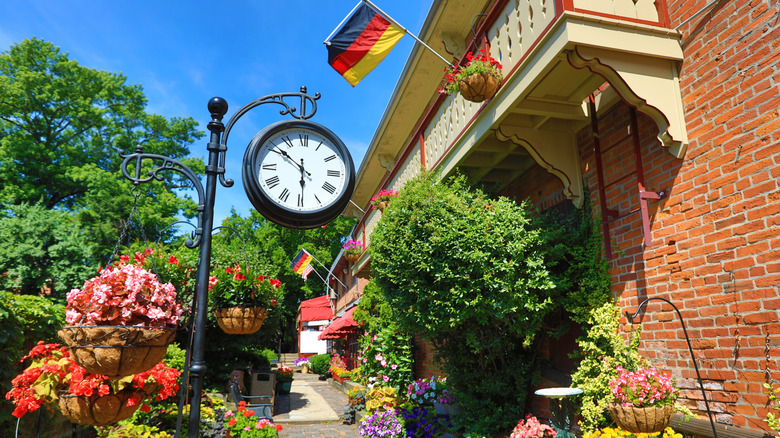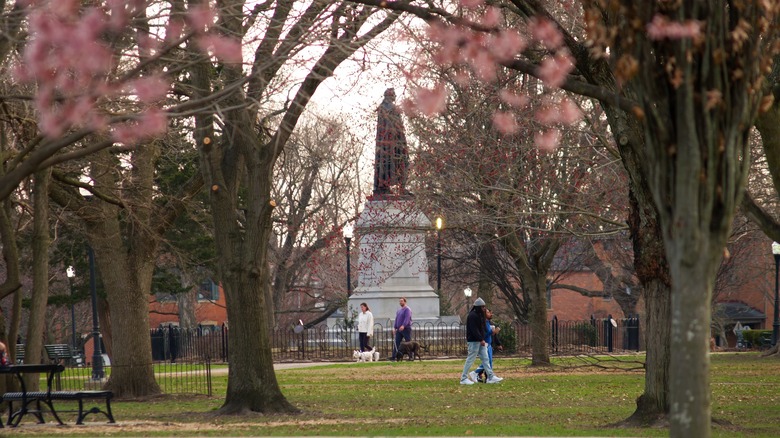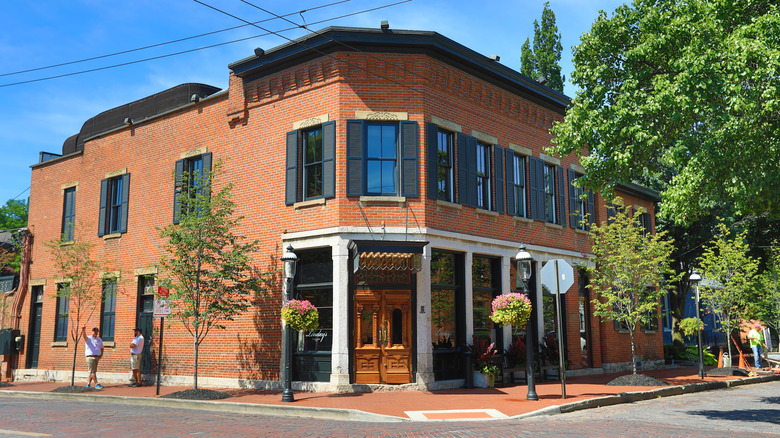One Of America's Most Idyllic Neighborhoods Is A Historic German Village Right Outside Downtown Columbus
The United States is a great melting pot of different cultures, nationalities, and backgrounds, which means that around every corner you'll find the influences of different groups of immigrants who came to the U.S. over the centuries with the idea of building something new. The evidence of this can be seen in the many different cultural neighborhoods in U.S. cities, from some of America's best Chinatowns to the most-authentic German villages. In fact, German neighborhoods and cities thrive throughout America, giving travelers a way to experience European-style vacations without having to catch a long-haul flight. One example is the town of Fredericksburg, which offers a slice of German food, architecture, and culture in Texas. For travelers in the Midwest, one of the best places to experience a laid-back European village atmosphere is in the historic German Village neighborhood of Columbus, Ohio.
Spanning from Route 33 to Nursery Lane, German Village is only around a 5-minute drive from Downtown Columbus and is an integral part of the city. In fact, this neighborhood was first planned in 1814 which is only two years after the city of Columbus itself. Because of this, German Village grew up alongside the rest of the city, giving it a unique footprint that seamlessly blends German and American culture. So, if you're in the mood for authentic German cuisine and hospitality, now may be a good time to book a flight to Columbus to see what this neighborhood is all about.
What to expect when visiting the German Village neighborhood
One of the highlights of visiting German Village in Columbus is Schiller Park. Named after German poet, Friedrich von Schiller (whose park statue was cast in Germany and then shipped to Columbus), the park serves as a central hub for events and festivals throughout the year. It also has a pond, a playground, and a community center. Although it may not be one of the most magical towns in America that go all out for Christmas, the German Village Christmas Market at the park is still impressive and worth a stop for some mulled wine and handcrafted ornaments.
Food is another compelling reason to visit the German Village, and the main attraction is Schmidt's Sausage Haus Restaurant (and its Fudge Haus across the street). Established in 1886, Schmidt's is a great option for an authentic German dining experience. If you want something a bit more upscale, Valter's at the Maennerchor is another fabulous German restaurant inside a historic social club. While these restaurants do serve German beer, they are also both about a 15-minute walk from the Brewery District — so good beer is never hard to find.
Because German Village is in the heart of Columbus, the best way to get there is to fly into John Glenn Columbus International Airport and rent a car. You can also take a bus from the airport to German Village, although the journey will be quite a bit longer than driving. Luckily, the neighborhood itself is walkable, so you can park anywhere and get around the neighborhood easily on foot.
Walking through history in the German Village
Another advantage of visiting German Village in Columbus is simply being able to learn more about the history of U.S. immigration. During the 1800s, German immigrants were flocking to America to settle in different parts of the country. In Ohio, thousands of Germans started settling around Columbus as early as 1812. By 1890, there were over 7,000 immigrants within the city, many of which lived in the area that is now known as German Village. Today, there are only about 3,000 residents in the village of German descent, but the neighborhood is just as vibrant and exciting as it ever was.
That said, while German Village is a popular destination today, it was almost lost to history. During the 1950s, redevelopment projects threatened much of the neighborhood. By 1960, a third of the historic buildings had already been demolished, with more slated for destruction. That was the year the German Village Society was formed to preserve the area's rich history and cultural impact. Today, the society not only protects the neighborhood, but also runs a visitors center which provides maps and information about the area.
Over the decades, German Village has embraced its heritage by hosting various events and festivals. While Oktoberfest gets most of the attention, the festival that started it all was the Haus und Garten Tour, which began in 1960. The Tour continues to this day and is a great way to explore the idyllic homes and gardens of the neighborhood.


